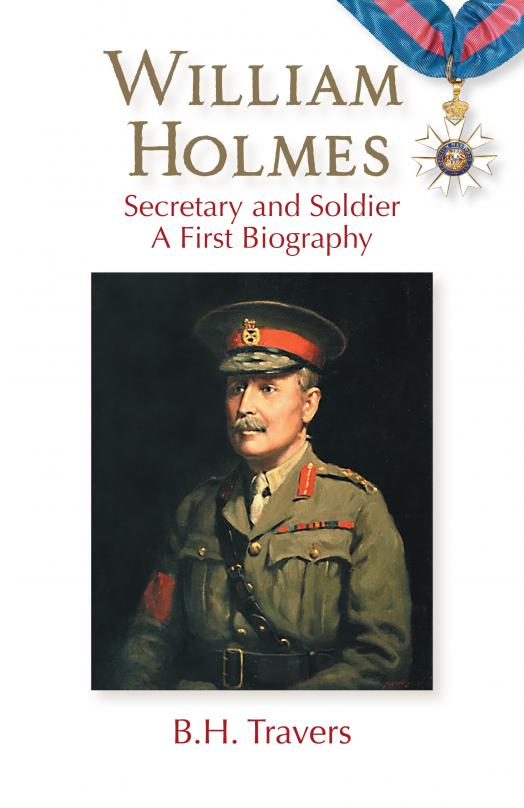This first biography was written by his grandson, Basil (Jika) Holmes Travers after his retirement in 1984, and was finally published in 2016 through the efforts of his daughter Philippa Holmes Hyles.
William Holmes was born in Sydney in 1862 and was killed on active service near Messines in 1917. He joined the 1st Infantry Regiment of the New South Wales Volunteer Force as a bugler in about 1872 and served in that unit – after Federation the 1st Australian Infantry Regiment (1st AIR) – as a soldier, NCO, officer and finally as the Commanding Officer.

Hardcover 606 pp RRP $44.95
As he was not a regular soldier he needed a full-time occupation, and this he achieved by passing the ‘Examination required for the Civil Service’ and starting work as a clerk in 1878. He rose to become the Secretary of the Sydney Board of Water Supply and Sewerage, an important position to which he returned when not on active service.
When the Boer War broke out in 1899, William Homes obtained leave to go to South Africa where he commanded a squadron of the First NSW Mounted Rifles. He was wounded at the Battle of Diamond Hill and returned to Australia with an appreciation of the importance of the improved accuracy, long range rifle and this led to his efforts to make rifle training more appropriate to modern conditions.
In 1914 he again requested leave and saw active service in German New Guinea as the Land Force Commander of the Australian Naval and Military Expeditionary Force (ANMEF), in Gallipoli as a brigade commander and temporary division commander and in France as a brigade commander and finally as the 4th Division Commander. He was killed by a shell fired at long range while escorting the NSW Premier, Mr Holman behind the lines near Messines.
At 600 pages this is not a short biography: it is very detailed with numerous excerpts from William Holmes’ letters and could not have been written without the extensive papers in the possession of the family. The development of the Sydney water and sewerage system to cope with the increasing population makes interesting reading and the chapters on the Boer War show the transition of the Australian contingent from infantry to mounted rifles and their leading role in the advance to Pretoria.
Almost one third of the book is devoted to William Holmes as the ANMEF Commander: raising the ANMEF, at sea en route to New Guinea in HMAS Berrima, the capture of the wireless station at Bita Paka, the German capitulation and the administration of the captured colony. He succeeded in New Guinea despite receiving almost no instructions from the government but created controversy by giving several Germans who had flogged a British clergyman a taste of their own medicine.
The reader will have no difficulty in agreeing that William Holmes was Australia’s first great citizen leader and commander.
Reviewed for RUSIV by Roger Buxton, December 2016
Contact Royal United Services Institute about this article.






